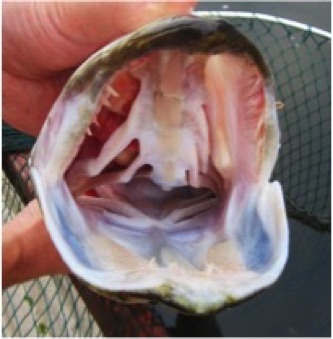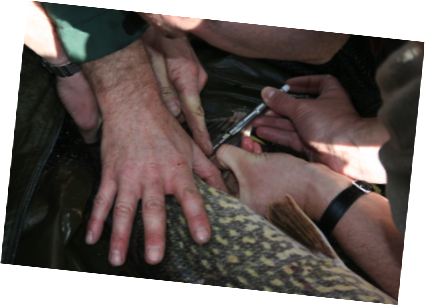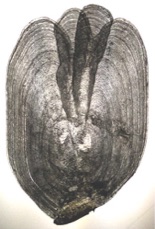
Unusual for Fisheries, but this project was conceived in a café, not a pub, in the lovely City of Norwich, UK. Underpinning the meeting were concerns that northern pike (Esox lucius) stocks are in decline, both in Europe and North America. This was also reflected nearer to home by local pike anglers and Jon Currie, General Secretary of the Pike Angling Club of Great Britain (PACGB). The origins however, were prior to this caffeine fueled meeting, originating from the Pike Sub-Group of the Broads Angling Services Group (BASG). Keenness to look into pike at a local level was met with willingness of EA Fisheries Technical Specialist Steve Lane to listen and act upon those concerns and the project was born.
Project concept
The project was actually conceived as a pilot study, evaluating the efficiency of capture and tagging pike over time with visual implant tags (VI), with the aim of establishing a wider tagging capture mark recapture study that anglers could administer themselves to evaluate the impact of angling pressure on pike stocks within the Norfolk Broads. With no prior VI studies being conducted on pike to crib from we were 'flying solo'.
Angler techniques
Following an assessment of various techniques and their effectiveness in capturing pike a Citizen Science approach was adopted using anglers to capture all fish for the project. Anglers were free to choose any suitable method of capture apart from live-baits.
A dedicated 'processing team' carried out all post capture processing. Days were often long, starting at dawn and working into the night. On one occasion we found ourselves processing fish at 11:30 at night after a pre dawn start! Time and tide…


The project was a collaboration between Norwich & District Pike Club (NDPC), Environment Agency (EA) and Fishtrack, with support from PACGB. The project was conducted on Sportsman's Broad, part of the Trinity Broads, a complex of 5 interconnected broads within a shallow side valley of the River Bure, Norfolk, Eastern England, UK. This was initially backed up by a second smaller broad, which was to act as a fail safe option, whereby a small private-access broad could be easily fished and the results compared with those of the much larger and potentially difficult broad to fish. However, our initial results proved that running the project on Sportman's broad was achievable and the fail safe broad was subsequently dropped.
Project outputs
Being ambitious we sought further outputs from the study, such as population estimates through CMR, gender ratios, growth performance, scale calculated growth vs actual growth comparison and angler CPUE and for good measure environmental factors were also taken into consideration, enough to keep us busy!
The CMR work was undertaken in 2 stages, year 1 the initial capture and year 2 being the subsequent recapture, permitting various CMR models to be used to estimate the pike population within the broad. There were 6 angling events per year and numbers of anglers were also recorded to provide CPUE.
Biometric data was collected at an individual level. This provided data for the scale work and comparison between calculated growth and field data.
Results
There were 12 angling events with a total angler effort of 149 man-days. The results of all this effort were the capture of 522 fish of which 505 were tagged. The size range of pike caught varied between 366 to 960 mm (mean 613 ± 4 mm).
A total of 504 fish were sexed, with overall sex ratio being 1M: 1.4F, this ratio being significantly different to 1:1 (P< 0.01). Scale age estimated male and female were between 2-9 years and 2-11 years old respectively.
Recapture
The recapture rate was 19%, with no individual captured more than once. The average time between capture and recapture was 265 days. The longest recorded readable tag was at 1036 days, which was a large female circa 23Lbs, indicating the long term survival following initial capture by angling methods.
Tag retention
Overall tag retention rates were 96%, of which 53% retained both tags. Despite that no extent data could be found on retention rates in northern pike, this study compares favourably with data trolled from the literature, where the closest comparison was with Tiger Muscellunge (Muscellunge x Lucius) 92% (Turek et al, 2014), though this was a laboratory study conducted over 28 days, whereas ours was field based over 730 days. Most of the tag studies with fish >500mm tended to be salmonid based with none relating to pike.
Population
CMR data provided estimates of the population by number and density. Two methods of population estimate were employed with estimates varying between 846 and an abundance of 15.4 fish.ha-1 and 756 fish and abundance 13.7 fish.ha-1, providing a first time estimate of pike populations in a Norfolk Broad.
Incremental analysis was from scale and mark recapture data, using data independent from each other. What did it all mean? A general pattern emerged, showing scale data tended to elevate estimates of growth rates and increments compared to the growth data and females had faster growth trajectories than males
Further growth related analysis confirmed that the resident pike had recovered from their previously poorer growth performance (2006) and that food sources were not limiting.
Outputs
Following on from the success of the project the results of the study are being processed for publication within peer reviewed literature of the scientific community
Conclusion
In conclusion, this study demonstrated the validity of using anglers as citizen scientists to generate a strong dataset for a pike population in a waterbody of high habitat complexity. From 522 captured fish, tag retention rates, population estimates and age and growth rate analyses were completed, providing new knowledge on this population. In entirety, it demonstrated the high utility of using VI tags for the long-term study of pike and the substantial benefits that can be gained when anglers are incorporated into study designs and sampling programmes. It also demonstrated that if you wish to engage with pike anglers, you have to get up very early!





Both the recapture rate and long term recaptures support our experiences that mortality from the method was low and unlikely to bias CMR estimates.
Of the recaptured fish, 98% were sexed, with the sex ratio female biased (1M: 1.6F). Perhaps unsurprisingly, females were significantly larger than males (P<0.01).

Growth
Scale growth data vs incremental growth was undertaken in part to validate scale analysis and also as a method of ageing fish where there is considerable uncertainty surrounding the ages of larger individuals.

Northern Pike VI Tag Retention and Population Dynamics in Sportsman's Broad, UK